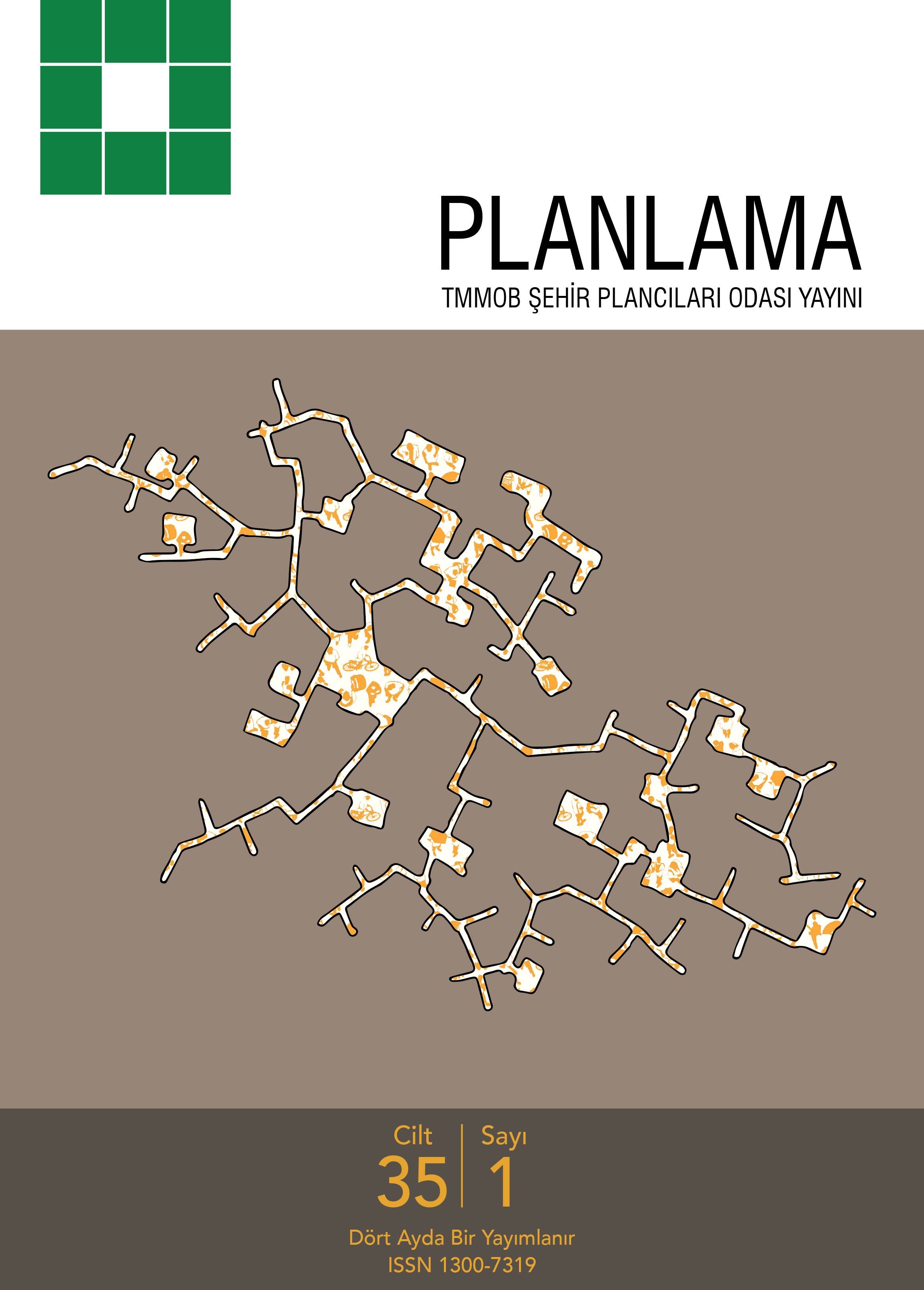Distribution and Clustering of Turkish Cities on the Principle Components of Sustainable Quality of Life
Arzu Taylan SusanBursa Technical University Faculty of Architecture and Design, Department of City and Regional Planning, BursaThis article aimed to evaluate the quality of life across the NUTS-3 regions in Turkey with spatial aspects regarding objective and subjective indicators so that to contribute into socio-economic development and urbanization policies. Bringing the discussion of economists and geographers in measuring urban quality of life into regional development and sustainability context, this study applied principal component and k-means cluster analysis. Accordingly, five components constitute urban life quality in Turkey. Most distinguishing components are urbanization with Higher Life Standards and urbanization as Happy, Healthy and Secure. That is, more economic, physical and social infrastructure investments seem always not to provide happiness and satisfaction. Based on these components, the cluster analysis revealed four city clusters. Cluster-2, which encompass greater cities and their neighbors with various scales in western Turkey, has the highest life standards
and obtains intermediately happy residents. Surrounding them, Cluster-3 includes medium-small scale cities, which are the happiest cities that satisfy well-being utmost. Despite medium-level life standards, Cluster-1 possesses unhappiest cities mostly in eastern and southeastern regions with greater population. In the same region, Cluster-4 cities are happier in spite of their lower level objective qualities. Based on results, higher objective life quality in greater cities addresses centralization and spillover effects, while lower subjective quality tends to be centrifugal. As greater cities experience both positive and negative influences of urbanization, the subjective evaluations decline in contrast to neighboring and more distant cities. Moreover, cities of eastern and southeastern regions seem to experience less positives and more externalities, which might be due to security problems.
Türkiye Kentlerinin Sürdürülebilir Yaşam Kalitesi Temel Bileşenlerinde Dağılımı ve Kümelenmesi
Arzu Taylan SusanBursa Teknik Üniversitesi Mimarlık ve Tasarım Fakültesi, Şehir ve Bölge Planlama Bölümü, BursaBu makale, Türkiye Düzey-3 bölgelerindeki yaşam kalitesini, nesnel ve öznel ölçütleri kullanarak, mekânsal boyutuyla değerlendirmeyi, böylece sosyo-ekonomik kalkınma ve kentleşme politikalarına katkı sağlamayı amaçlamaktadır. Ekonomistlerin ve coğrafyacıların kentlerde yaşam kalitesinin ölçülmesiyle ilgili tartışmalarını bölgesel gelişme ve sürdürülebilirlik bağlamına taşıyan çalışma, temel bileşen ve k-ortalamalar kümelenme analizlerini kullanmıştır. Bulgulara göre, Türkiye kentlerindeki yaşam kalitesi beş bileşende ayrışırken, Yaşam Standartları Yüksekve Mutlu, Sağlıklı ve Güvenlikentleşme bileşenleri temel ayırt edici niteliktedir. Başka bir deyişle, ekonomik, fiziki ve sosyal altyapı yatırımlarının fazla olması, her zaman mutluluk ve memnuniyet getirmemektedir. Bu bileşenlerle yapılan kümelenme analizinde dört kent kümesi bulunmuştur. Yaşam standartları en yüksek ve nispeten mutlu Küme-2 kentleri, ülkenin batısındaki büyükşehirler ve yakınlarındaki farklı büyüklükteki kentlerden oluşmaktadır. Bunların çevresindeki Kume-3 kentleri, Türkiyenin en mutlu ve iyi-olma-halini en fazla sağlayan orta-küçük ölçekli kentlerdir. Yaşam standartları orta düzeyde olmasına rağmen, en mutsuz olan Küme-1 kentleri, çoğunlukla ülkenin doğu ve güneydoğu bölgelerindeki büyük şehirlerdir. Genelde nesnel yaşam kalitesi düşük seviyede olmasına rağmen daha mutlu Küme-4 kentleriyle komşudurlar. Bu sonuçlar, yaşam standartlarının büyük şehirlerde merkezileşme ve çevrelerine olumlu yayılma etkisine karşın, öznel yaşam kalitesinin merkez-kaç etkisini göstermektedir. Büyük şehirler, kentleşmenin olumlu etkileri kadar negatif dışsallıklarını da deneyimledikleri için, öznel değerler buralarda düşmekte komşularında ve uzaklaştıkça artmaktadır. Ancak, doğu ve güneydoğu bölgelerinde, olumlu etkiler azalırken dışsallıkların artması, güvenlik sorunuyla da ilgili görünmektedir.
Anahtar Kelimeler: Kentleşme, kümelenme analizi; sürdürülebilir kalkınma; temel bileşen analizi; yaşam kalitesi; yaşam memnuniyeti; yaşanabilirlik.Manuscript Language: Turkish













